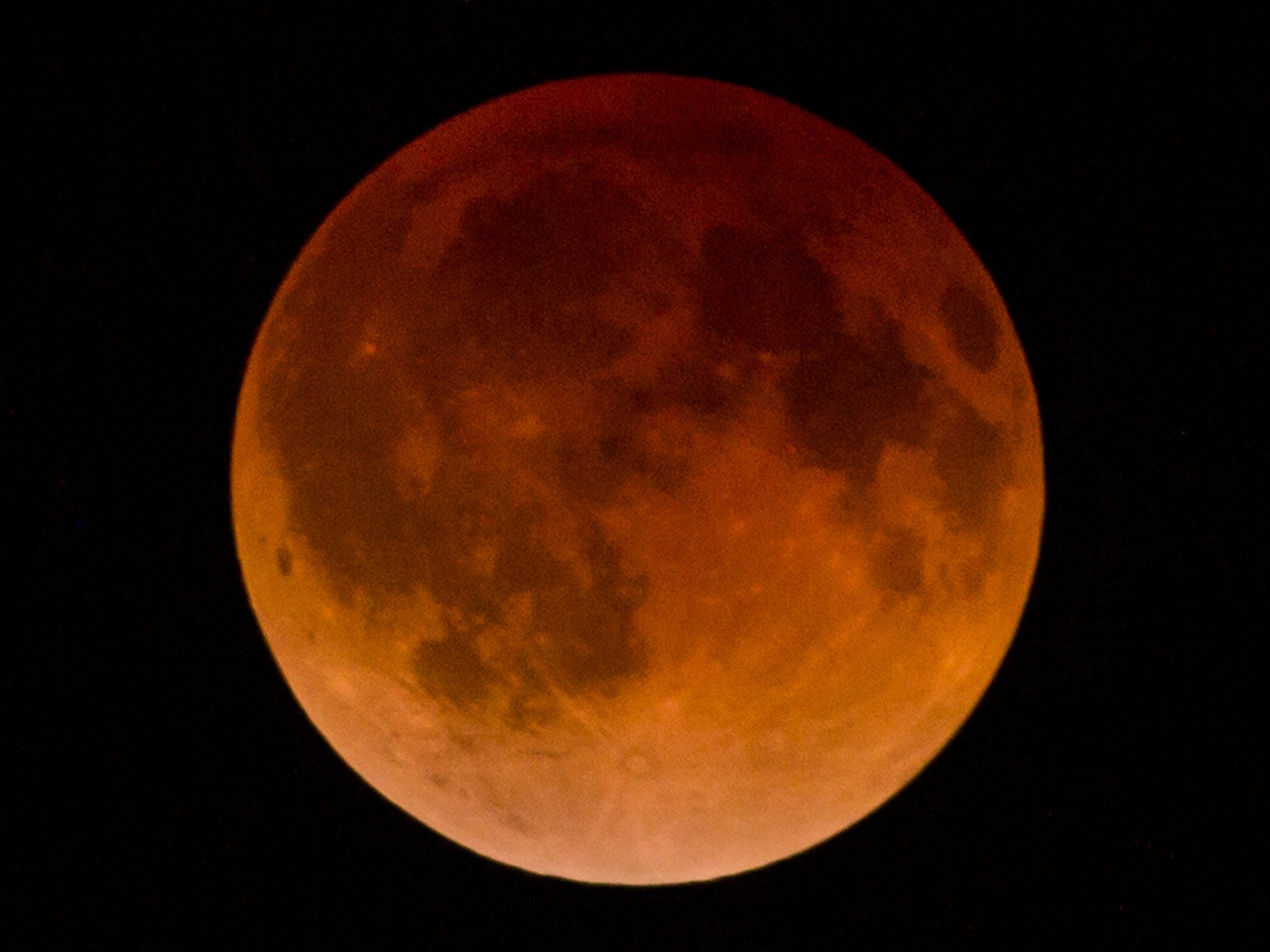Lunar eclipse 2014: Images of the spectacular 'blood moon'
Colouring is caused by the Sun's rays refracting through Earth's atmosphere

Your support helps us to tell the story
From reproductive rights to climate change to Big Tech, The Independent is on the ground when the story is developing. Whether it's investigating the financials of Elon Musk's pro-Trump PAC or producing our latest documentary, 'The A Word', which shines a light on the American women fighting for reproductive rights, we know how important it is to parse out the facts from the messaging.
At such a critical moment in US history, we need reporters on the ground. Your donation allows us to keep sending journalists to speak to both sides of the story.
The Independent is trusted by Americans across the entire political spectrum. And unlike many other quality news outlets, we choose not to lock Americans out of our reporting and analysis with paywalls. We believe quality journalism should be available to everyone, paid for by those who can afford it.
Your support makes all the difference.We’re happy to say we called it: last night’s total lunar eclipse (the first of four successive ‘blood moons’) passed without even a hint of the apocalypse - instead we got a spectacular view of the Moon was stained red by the Sun.
Although this visual treat was only visible to people in America and a few other locations worldwide (the eclipse was happening in daylight hours in the UK), we've got a selection of the best pictures below.
The distinct colouring was caused as the Moon passed into the deepest part of the Earth's shadow (the umbra*), with the Sun's rays refracting through our planet's atmosphere to disperse the other parts of the spectrum of visible light, leaving only the red portion to reflect of the Moon's surface.
The astronomical phenomenon was the first in the 'lunar tetrad' - a series of four total eclipses that will continue into 2015. The next will take place on 8 October 2014 although, unfortunately, it won't be visible for UK residents - we’ll have to wait until 20 March 2015 for a (non-total) lunar eclipse.
Until then you can click here to read more about the tetrad (and why some people think it heralds the end of times).
*Fun fact: there are three distinct parts to a shadow. The umbra is the innermost and darkest part; the penumbra is comprised of the parts that are only partial shadows; and the antumbra is the section from which viewers can see the object causing the shadow 'contained' within the light source. When we see a total solar eclipse - with the outline of the moon framed in the Sun's rays - we are in the antumbra of the Moon's shadow.
Join our commenting forum
Join thought-provoking conversations, follow other Independent readers and see their replies
Comments